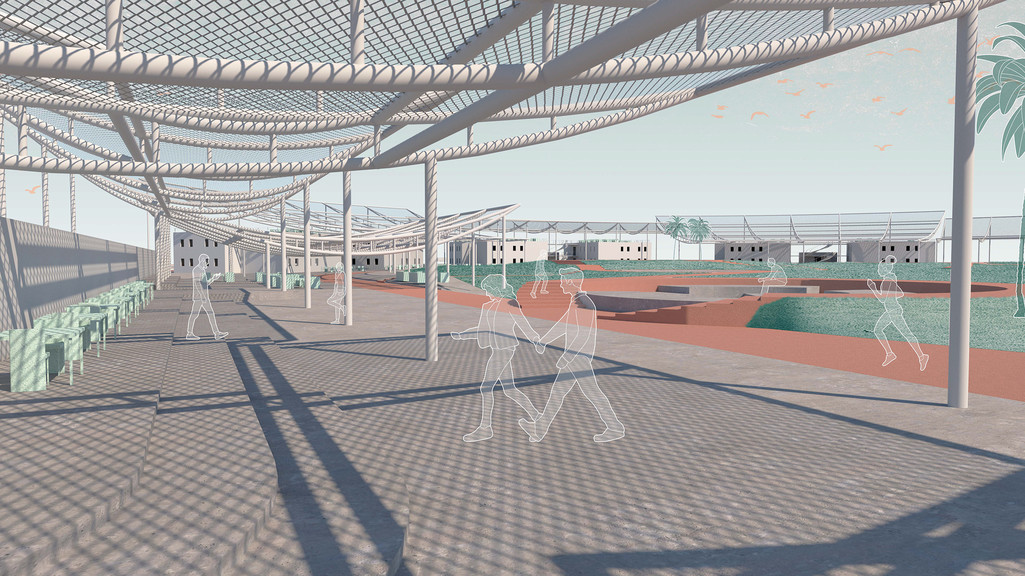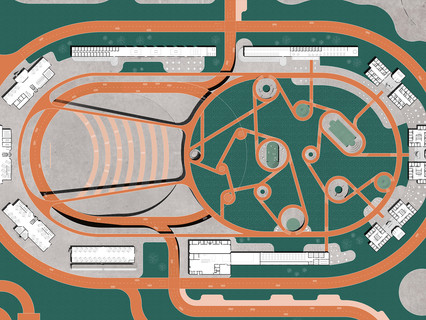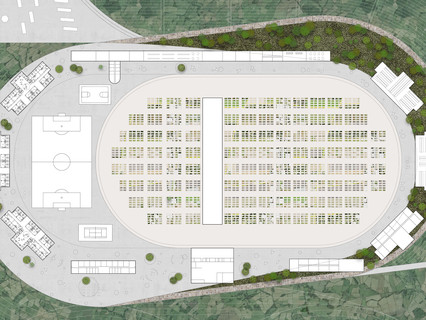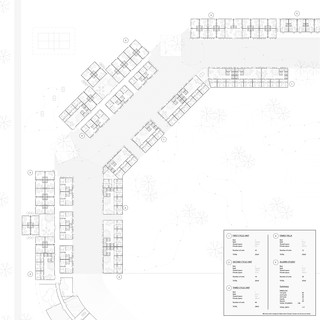
Less Than Ideal: Bigness Corrected
401 Advanced Topics Studio
2020
"A building has at least two lives – the one imagined by its maker, and the life it lives afterward – and they are never the same…...” -Rem Koolhaas
Through the rehabilitation of a 68-acre, obsolete former County-run juvenile detention facility, this studio considered architecture as an instrument – rather than symbol – of self-sufficiency: employing typological form, creation of an adaptable framework, ambience, or combination thereof. For the purposes of this studio, self-sufficiency shall be considered closely related to, but not necessarily synonymous with collectivism and community-building, though also certainly a value of the program. The singular goal of the program, however is to foster self-sufficiency in each participant by the time they graduate – through a combination of job skills, life management and social skills, assisted by the larger social context. The existing campus, which was designed according to a rigid, “disciplinary” model of correctional facilities dating back to the 18th century (see Fourier’s Phalanstery), needs to be itself corrected and reimagined to support this new approach to rebuilding the lives of youths through instruction and counseling.
Self-sufficiency pertains to the project not just in its programmatic (personal and human) dimension; it is one that you are asked to engage with respect to addressing the larger environmental context, with the ultimate goal of finding and establishing a parallelism and engagement between the two. The Antelope Valley is characterized by the same if not more extreme conditions of heat and drought as the L.A. basin, and the fact that the project site is also isolated, at some distance from the town of Lancaster itself, creates the imperative to achieve environmental self-sufficiency – the need to creatively consider how water, energy, food, waste etc, can be a renewable resource, so that costly infrastructure to connect it to the regional grid can be minimized. But beyond simply outfitting the project with such features, the greater potential of the project is in building those functions and logics into the daily life of the institution and the participants themselves. Can the landscape, for instance, itself be a productive and “working” one that requires tending by program participants? Can the architecture be designed in such a way as to self cool or heat, rather than requiring expensive and energy-consuming technology? Can rainfall on the very large site be sequestered, stored and filtered for reuse, and can that system be reflected in the design of roofs and ground?
Related Faculty |
Roger Sherman |










- Ni Zhang and Yifan Zhang
- Ni Zhang and Yifan Zhang
- Ni Zhang and Yifan Zhang
- Ni Zhang and Yifan Zhang
- David Erlich and Kate Gancedo
- David Erlich and Kate Gancedo
- David Erlich and Kate Gancedo
- Yujie Shi and Megan Berookhim
- Florian Lepinard and Noam Taylor
- Florian Lepinard and Noam Taylor